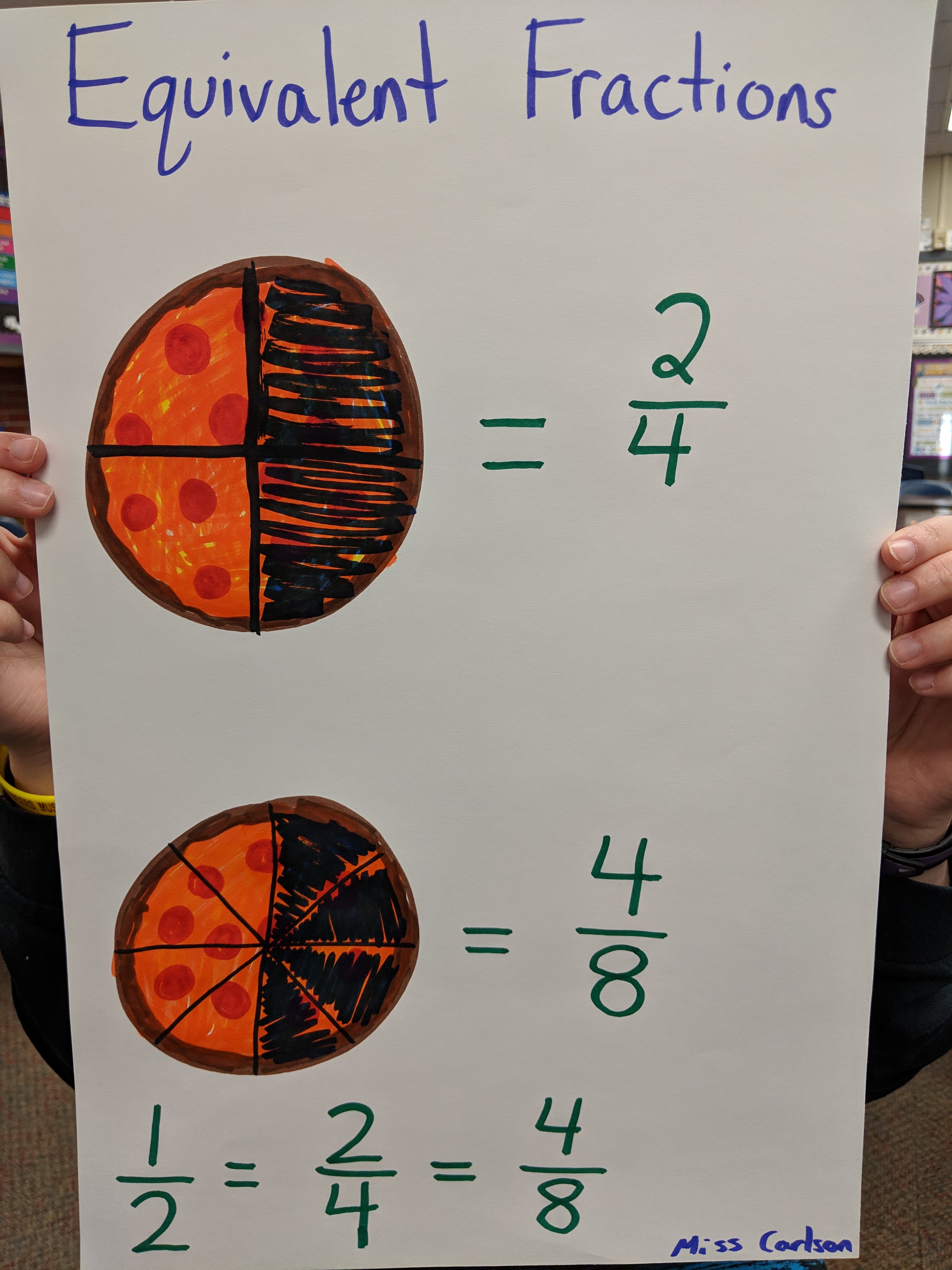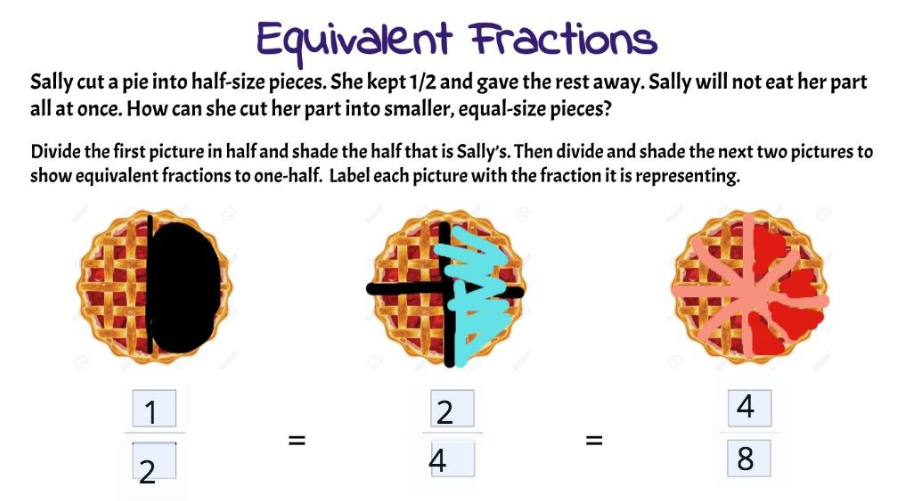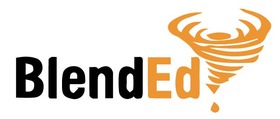Elementary Math: Equivalent Fractions
Unit Title: Equivalent Fractions
This unit was created by Tessa Janssen through Nebraska's ESUCC BlendEd Learning program. In this unit students will use models to show equivalent fractions. Students will use multiplication to generate equivalent fractions. Students will write and identify equivalent fractions in simplest form. Students will use equivalent fractions to represent a pair of fractions with a common denominator.
Content Area Skill:
Content Area Skills | Student Friendly Learning Objectives |
MA 4.1.1.i Generate and explain equivalent fractions by multiplying by an equivalent fraction of 1. | I can draw models to write equivalent fractions. I can use fractions strips to tell if two fractions are equivalent. I can write equivalent fractions using multiplication. I can write a fraction in simplest form using division. I can use equivalent fractions to write two unlike fractions with the same denominator. |
Digital Age Skill(s):
Computational Thinker
Knowledge Constructor
Empowered Learner
Duration of Unit:
5 lessons
Overview of Unit:
In this unit students will use models to show equivalent fractions. Students will use multiplication to generate equivalent fractions. Students will write and identify equivalent fractions in simplest form. Students will use equivalent fractions to represent a pair of fractions with a common denominator.
Empower Learners:
Content Area Skills (NE and ISTE Standards):
MA 4.1.1.i
Student Friendly Objectives:
I can draw models to write equivalent fractions.
I can use fractions strips to tell if two fractions are equivalent.
I can write equivalent fractions using multiplication.
I can write a fraction in simplest form using division.
I can use equivalent fractions to write two unlike fractions with the same denominator.
Empower Learner Activity:
Detailed Description:
Students will complete the pretest.
Knowledge Application:
Artifact Profile:
Title of the Artifact:
Equivalent Fraction Poster and Interactive Activity on Seesaw
Detailed Description:
Students will create a poster with the given large white paper to show and model two equivalent fractions. Each poster will display a title and two pictures modeling the equivalent fractions with labels. The pictures could be of cake, pizza, pie, sandwiches, lasagna, or an item of the student’s choice that is a rectangle or circle which can be divided into fractions. When the students are done creating their posters, they will take a picture of the poster using the Chromebook's camera. Then they will add the picture of their poster to the correlating assignment on Seesaw and then record themselves explaining how the two fractions on their poster are equivalent. Students will then complete a second assignment on Seesaw of an interactive word problem on equivalent fractions. Students will read the word problem and then they will divide the first picture of the pie in half. Then they will divide and shade the next two pictures to show equivalent fractions to one-half. Lastly, they will label each picture with the fraction it is representing. Poster Example Word Problem on Seesaw Example

Poster Example

Word Problem Example
Content Area Skills Addressed:
MA 4.1.1.i
Digital Age Skills
Empowered Learner
Digital Citizen
Knowledge Constructor
Creative Communicator
Link to Rubric
Knowledge Deepening:
Task 1
Whole Group -
Solve this problem as a group. "Joe cut a pan of lasagna into third-size pieces. He kept 1/3 and gave the rest away. Joe will not eat his part all at once. How can he cut his part into smaller equal-size pieces?"
Must Do- (Rotations)
1. Equivalent Fraction practice problems from textbook
2. Khan Academy Equivalent Fraction Video
3. IXL.com 3rd- X1
May Do- Link to Choice Board
Task 2
Whole Group -
Solve a real-life situation problem as a class. (Pizza)
Must Do- (Rotations)
1. Equivalent Fraction practice problems from textbook
2. IXL.com 3rd- X2
May Do- Link to Choice Board
Task 3
Whole Group- Students will do a coloring activity that demonstrates that 2/6 is equivalent to 1/3. I will then introduce the term simplest form and explain that it represents a fraction that is using as few equal parts of a whole as possible. We will use the greatest common factor to write 6/10 in simplest forms. We will use whiteboards to list the factors of six and then the factors of ten. The students will then circle the common factors and decide which number is the greatest common factor. Check for understanding: Pair/Share
Must Do- (Rotations)
1. Equivalent Fraction practice problems from textbook
2. IXL.com 3rd- X3
3. Scootpad Practice
May Do- Link to Choice Board
Task 4
Whole Group- We will pass out a piece of paper to each student and as a class we will do a paper folding activity showing equivalent fractions. I will model writing the fractions 4/5 and 1/2 as a pair of fractions with common denominators. I will show them how to list the multiples of five and two and then I will circle the common multiples.
Must Do- (Rotations)
1. Equivalent Fraction practice problems from textbook
2. IXL.com 3rd- X (Any)
3. Scootpad Practice
May Do- Link to Choice Board
Direct Instruction:
Learning Path:
Day # | Description | BlendEd Model | Resources |
1 | Empower Learners PreTest-Self Assessment | Flex | |
2 | Task 1 - Equivalent Fractions | Rotation | |
3 | Task 2 - Generate Equivalent Fractions | Rotation | |
4 | Task 3 - Simplest Form | Rotation | |
5 | Task 4 - Common Denominators | Rotation |
Resources:
See above
